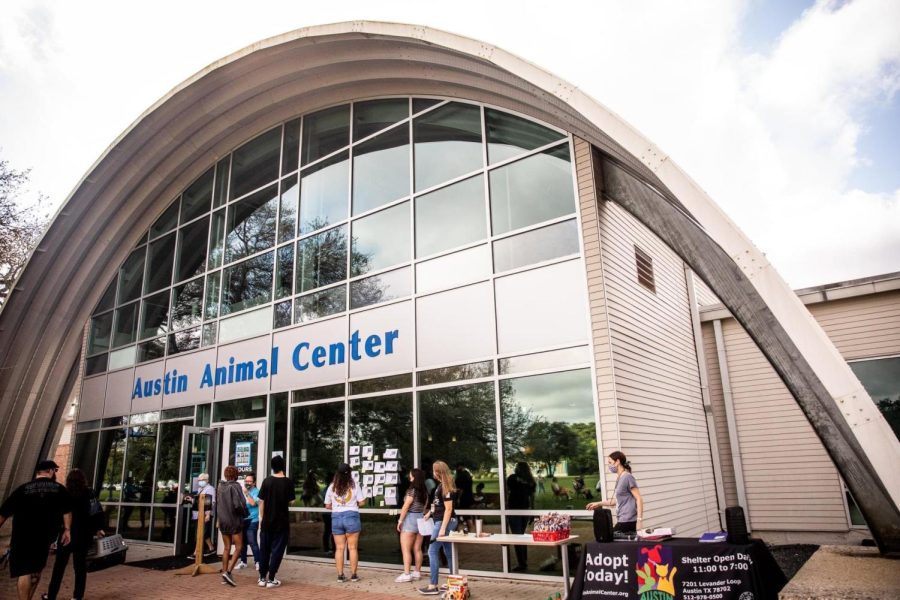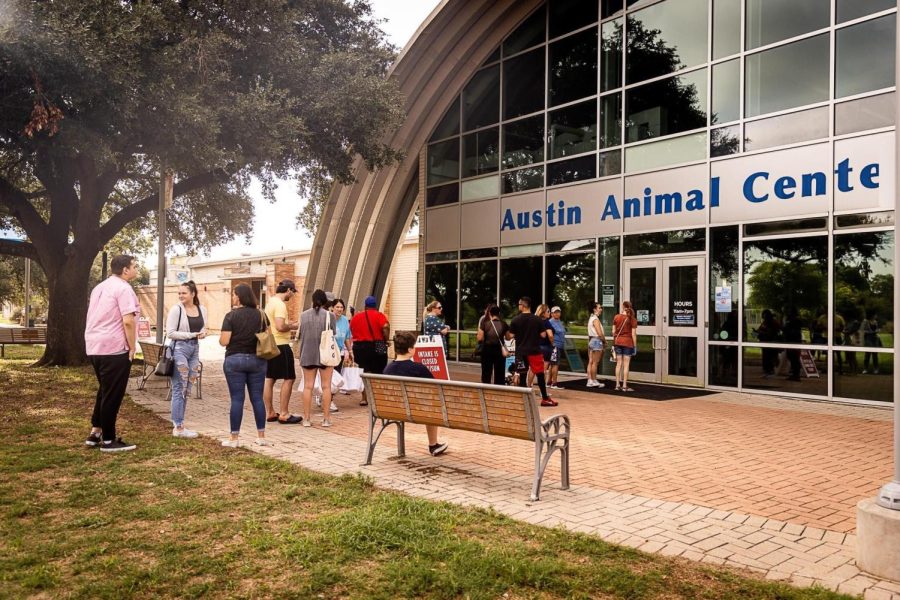Despite efforts at Austin Animal Center, high shelter demand requires community engagement
Austin Animal Center is located at 7201 Levander Loop, Austin, TX 78702. They are a municipal shelter for Austin and unincorporated Travis County.
December 23, 2022
The Austin Animal Center (AAC) provides shelter to thousands of animals each year, regardless of species, breed, health, behavior, or age. But with major economic shifts, animal misunderstanding and human failure, even the most popular animals, like kittens, puppies and small dogs are having trouble finding homes.
The AAC is the municipal shelter for the City of Austin and unincorporated Travis County. The shelter is funded by the state through taxpayer money, separating it from private, nonprofit organizations like Austin Humane Society and Austin Pets Alive. As a result, they are partnered with animal control. The majority of animals surrendered by previous owners, found abandoned, or collected due to safety concerns are sent to them.
The center is humongous, but just not big enough for their recent intake. Dogs, cats, rabbits and even roosters remain on site, all looking for a home. But, some are left with harsher conditions than staff prefer. As of late December, 20 dogs sat in crates in the AAC’s conference room, meant for staff meetings and volunteer orientations. They sit together side by side, in rows, and escape their confines, traditionally, a mere 30 minutes to an hour of the day due to deficient volunteering.
The AAC needs help. Fostering and adoption rates have declined since the pandemic, causing too high intake, leading to unideal animal conditions. Economic downfall, size and breed restrictions in certain areas of Austin and high housing costs have led many to reconsider a family pet.
Though long term care may be unsuitable to many households during tumultuous times, fostering poses a silver lining. A foster application link is available on the AAC’s website. A spur of cold weather that has swept across Austin poses a threat to the comfort of animals.
According to Department Executive Assistant Belinda Hare, there’s usually an increase in foster and adoption during the summer, as adopters most likely have more time during that season to dedicate to a new pet. And while adoption rates slightly increase during the holidays, fostering declines as many travel for the holidays, unable to provide suitable housing.
In addition, fostering an animal doesn’t induce as much stress over specific traits people may look for when adopting, due to its temporary nature. Because even when many animals get a glimpse of their “forever home,” they may be later returned.
According to Hare, adopters must evaluate if a pet is the best option for them and be prepared for the commitment of the pet’s entire life. Consider responsibilities like lifetime medical care, unexpected life changes, moving, training a new pet, or integrating them into a new household. Because many neglect these aspects of adoption, animals are stuck back at the shelter.
A particularly vulnerable group at the shelter includes senior animals, which include animals ages seven and up. These animals may need additional medical attention and a relaxing place to rest in their older state. Fostering provides an opportunity for these animals to obtain needed rest and relaxation that they might not always receive due to the noisy nature of the shelter.
In addition, a subgroup of dogs that have had a lengthy stay at the shelter are a part of the “Long Stay Love Club.” This group aims to direct additional attention to dogs that have previously been overlooked. For, the AAC is designed to be a temporary shelter for animals, not a home. Info and images of dogs in the “Long Stay Love Club” will be included in the gallery attached below.
In an effort to reduce returns, the AAC tries to educate potential adopters to see pets as individuals, which require realistic expectations. Potential adopters and fosters must have patience, understanding, consistency and a willingness to sufficiently work with an animal deserving of the same amount of grace designated to humans.
Austin Animal Center – Available Pets
Austin Animal Center – Foster Application







